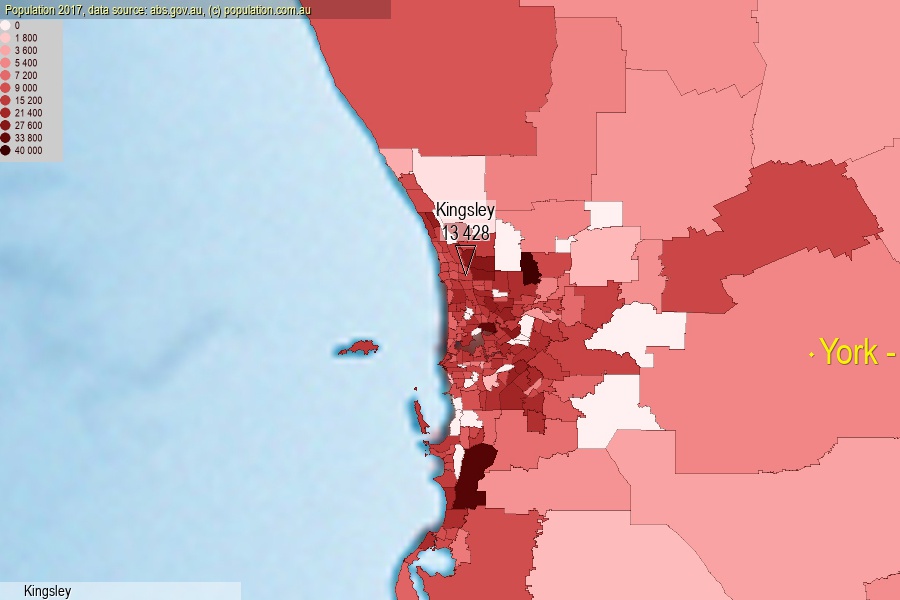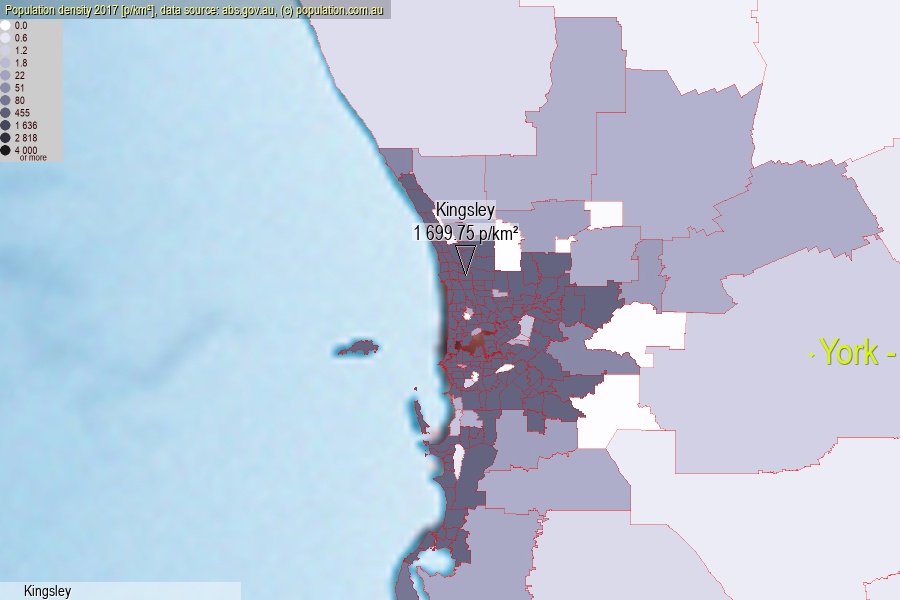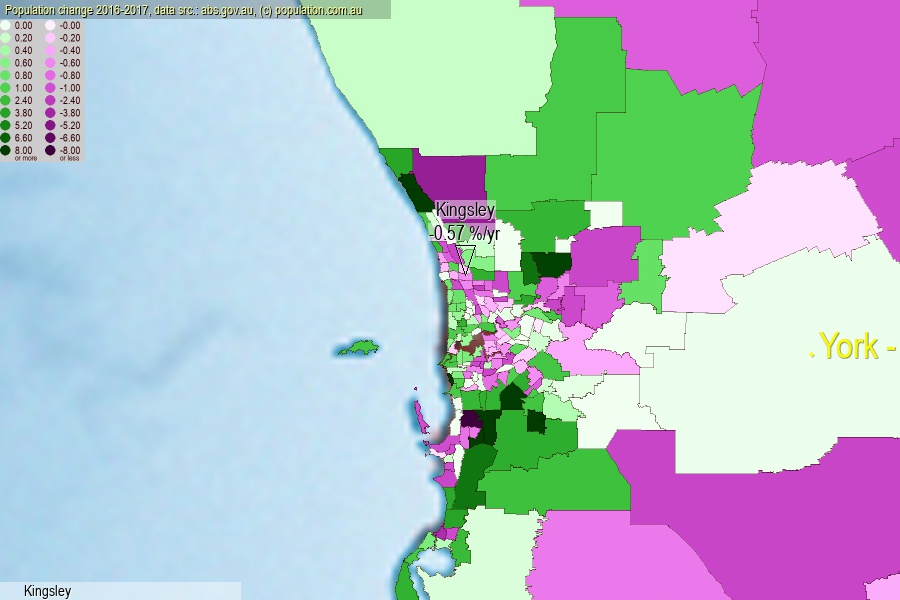 population.com.au
population.com.auLast official estimated population of Kingsley (as Statistical Area Level 2) was 13 428 people (on 2017-06-30)[2]. This was 0.05% of total Australian population and 0.518% of WA population. Area of Kingsley is 7.90 km², in this year population density was 1 699.75 p/km² . If population growth rate would be same as in period 2016-2017 (-0.57%/yr), Kingsley population in 2025 would be 12 828. [0]



Click to enlarge. Kingsley is located in the center of the images.
Population [people], population density [p./km²] and population change [%/year] [2]
View borders » (new window) [4]
[1991-1992] +1.75 %/Yr.
[1992-1993] +0.68 %/Yr.
[1993-1994] +0.22 %/Yr.
[1994-1995] -0.03 %/Yr.
[1995-1996] -0.11 %/Yr.
[1996-1997] -0.56 %/Yr.
[1997-1998] -0.86 %/Yr.
[1998-1999] -1.04 %/Yr.
[1999-2000] -1.27 %/Yr.
[2000-2001] -1.35 %/Yr.
[2001-2002] -0.69 %/Yr.
[2002-2003] -0.58 %/Yr.
[2003-2004] -0.65 %/Yr.
[2004-2005] -1.05 %/Yr.
[2005-2006] -0.25 %/Yr.
[2006-2007] +0.41 %/Yr.
[2007-2008] +0.14 %/Yr.
[2008-2009] -0.01 %/Yr.
[2009-2010] -0.02 %/Yr.
[2010-2011] +0.29 %/Yr.
[2011-2012] +0.38 %/Yr.
[2012-2013] 0.00 %/Yr.
[2013-2014] -1.05 %/Yr.
[2014-2015] -1.31 %/Yr.
[2015-2016] -1.37 %/Yr.
[2016-2017] -0.57 %/Yr.
[0] Calculated with linear interpolation from officially estimated population
[1] Read more about SA2 and Australian Statistical Geography Standard (ASGS) on abs.gov.au
[2] Population data from Australian Bureau of Statistics (Population and density: 2017; change: 2016-2017)
[3] Digital Boundaries: Australian Statistical Geography Standard (ASGS) 2016.
[4] Border coordinates are simplifyed using Ramer-Douglas-Peucker algorithm.